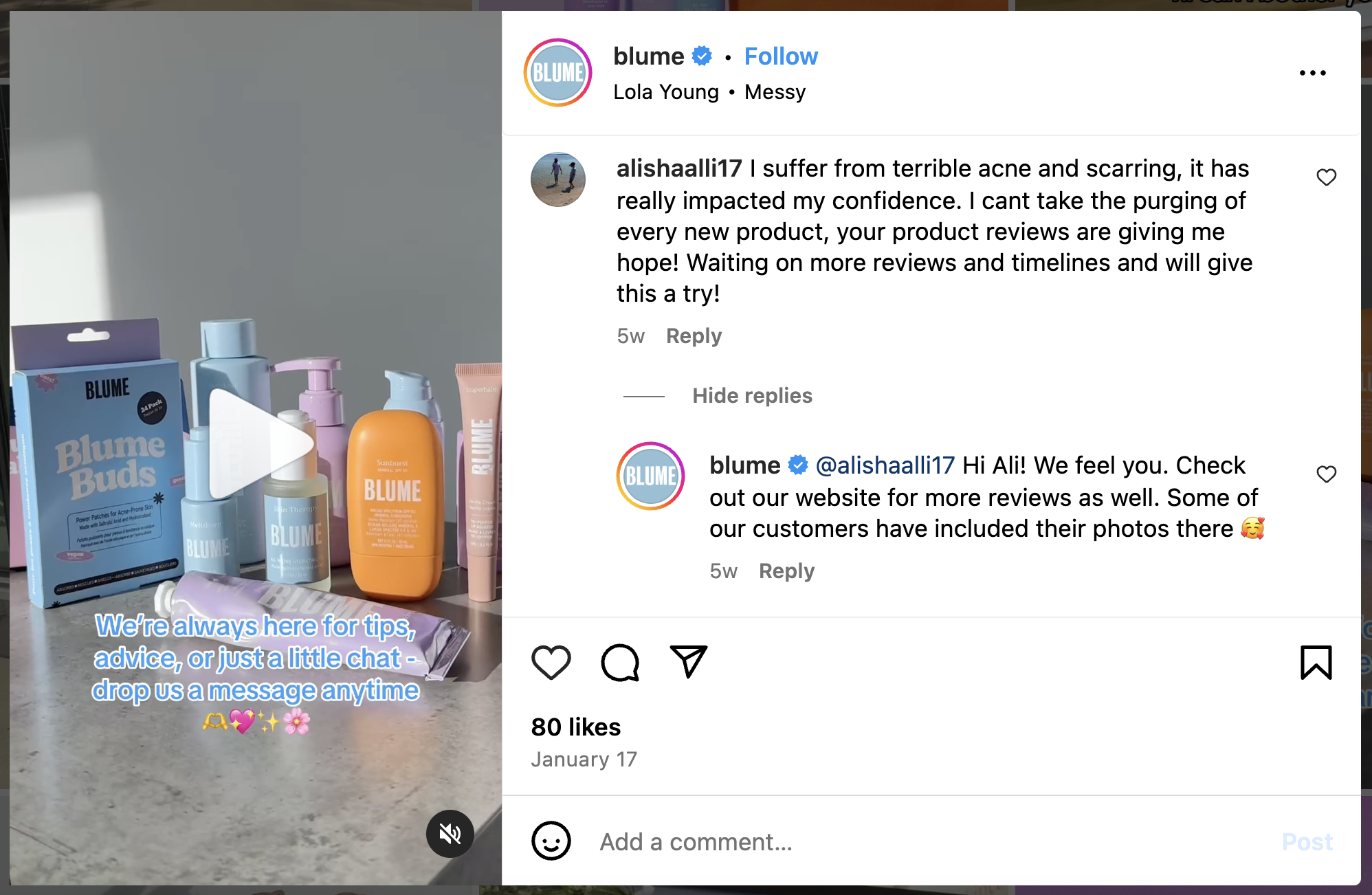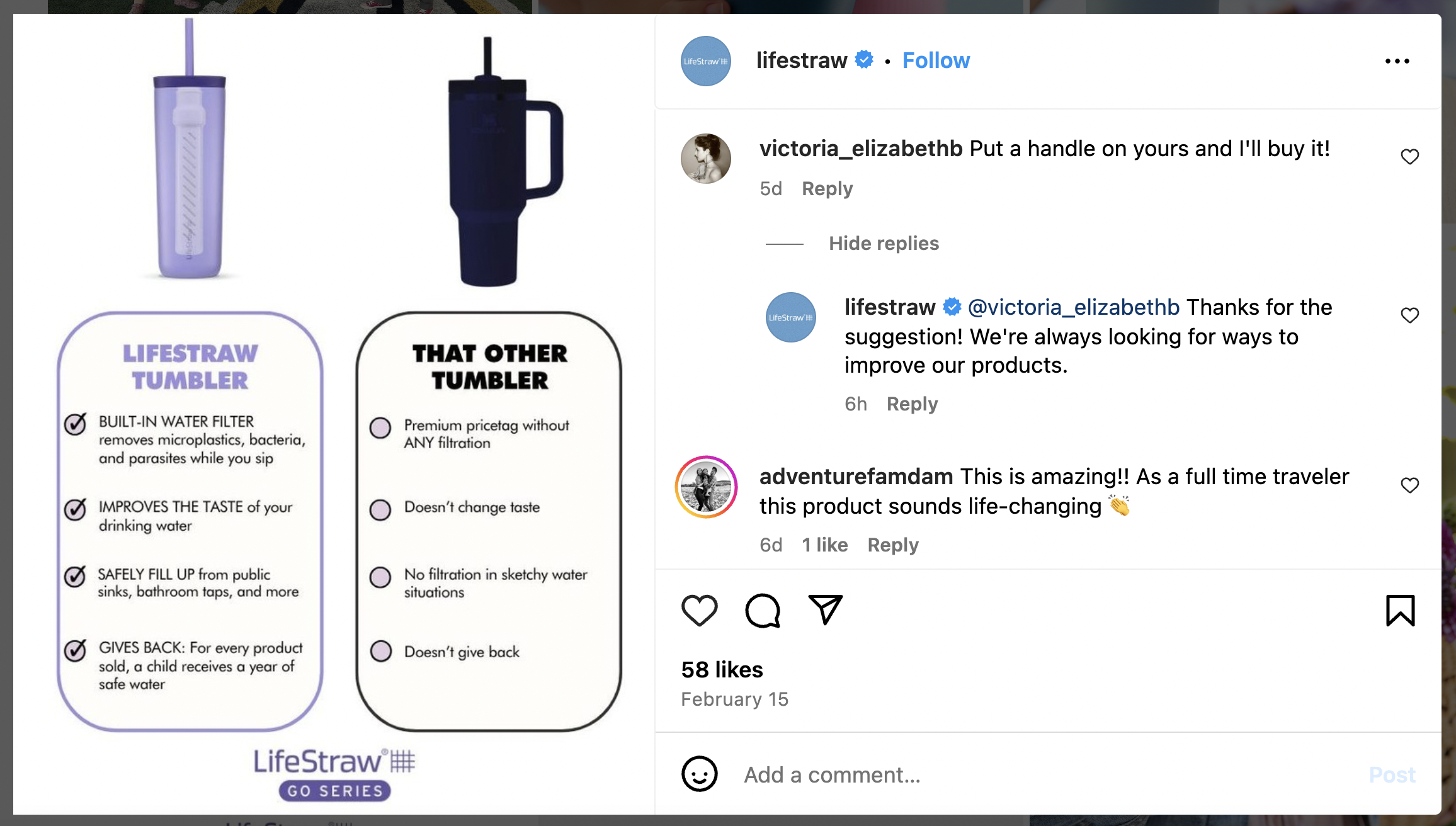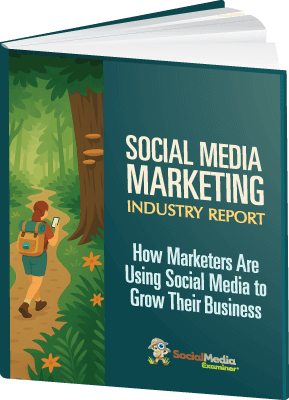Wondering how to make your social media efforts more profitable? Looking for ways to improve customer retention and acquisition through social platforms?
In this article, you'll discover how to implement a social care strategy that enhances customer experience and drives business growth.

Why Social Care Matters for Marketers
While algorithms shift and platforms rise and fall, one thing remains constant: your customers are using social media as a support channel. They're on social media to research, learn about, review, and shop from brands. They want fast, human, helpful information when they need it—regardless of which platform they're using.
Pushing sales-focused content through social media isn't meeting that need. Brands increase their content marketing budgets yearly, only to face disappointing results.
Social care offers a way to break this cycle by focusing on relationships rather than just reach. Social care is a strategy that doesn't put you at the mercy of the algorithms because it's built on having direct real-time conversations with potential customers and customers,” explains Brooke Sellas, founder and CEO of B Squared Media, an agency that helps brands connect, converse, and convert on social media.
Unlike traditional social media marketing, which often struggles to demonstrate ROI, social care delivers tangible results that get noticed by leadership. The business impact extends beyond marketing. Effective social care provides valuable insights for product development, research, HR, sales, and marketing teams—creating a comprehensive feedback loop that benefits the entire organization.
What Is Social Care?
Social care is often confused with social media moderation, but they're fundamentally different approaches.
Social media moderation is primarily about managing content—filtering comments, removing spam, and enforcing community guidelines. It's reactive and protects the brand.
Social care, by contrast, grows the brand by managing relationships. It involves proactively finding and responding to customer questions, solving problems, and creating meaningful conversations with potential and existing customers.
Customer experience (CX) is at the heart of social care. It's about understanding the experience you want your customers to have versus the experience they actually have and closing that gap through meaningful interactions.
Instead of waiting for people to reach out, social care uses social listening to proactively find and join relevant conversations, taking the burden away from your customer one click at a time.
Where to Place Social Care
While there's no one-size-fits-all answer to who should own social care, Sellas suggests it ideally sits at the intersection of marketing, sales, and customer support. This cross-functional approach recognizes that social care combines elements of all three disciplines to create a comprehensive customer experience strategy. “It is customer support, it is marketing, and it is sales,” Sellas emphasizes.
The CARE Methodology
Sellas has developed the CARE method, a flywheel approach to implementing effective social care:
Ready to Supercharge Your Marketing Strategy?

Get expert training and an unbeatable conference experience when you attend Social Media Marketing World—from your friends at Social Media Examiner.
Broaden your reach, skyrocket your engagement, and grow your sales. Become the marketing hero your company or clients need!
🔥 Save $850 on an All-Access ticket. Sale Ends Tuesday! 🔥
GET THE DETAILS#1: Conversation
Instead of treating social media as a megaphone for broadcasting content, approach it as a telephone for two-way communication. When you talk with your audience rather than at them, you transform passive followers into active fans.
These conversations help you build trust, uncover customer needs, create loyal advocates, and identify community members who might even become brand ambassadors.
Creating Conversational Content
Creating conversational content doesn't have to be complicated. Sellas suggests starting with polls: “Every single one of the social media channels has the poll option. Start to run polls that are adjacent to your brand.”
While these might begin as fun, general-interest questions, they can evolve into valuable market research. “Sometimes, it literally comes to what we're going to produce next, like product development and going to market with a product by asking on social our customers which product they want to see next. Or do they want to see it in silver or gold?”

The payoff can be substantial. When consumers tell you what they want, and you give them what they ask for, you begin to see results like selling out of products.
Other approaches to creating conversation include:
- Sharing opinions and asking for audience feedback
- Starting discussions with thought-provoking questions
- Creating “unpopular opinion” posts to stimulate debate
These approaches generate significantly higher engagement than standard promotional content. For example, Sellas shared a LinkedIn post stating, “Unpopular opinion: social media isn't forever (and that's okay),” which generated over 3,000 impressions on a text-only LinkedIn post because it sparked genuine conversation.

Learning from Successful Brands
Brands like Blume (a makeup company) excel at using customer conversations to drive content and product development.
Sellas shares how customers repeatedly mentioned loving a particular scent and wanting it as a deodorant. Blume compiled these comments into a carousel post on Instagram, announced they had created the requested product based on customer feedback, and linked to the shop. The result? “It sold out…a few weeks later.”
LinkedIn also demonstrates this approach by publishing posts like “We've reduced the budget. Name another marketing horror story in four words or less.” They then analyze the responses to understand customer pain points and create content specifically addressing the most commonly mentioned challenges.
“You're not just asking to ask,” Sellas explains. “You're not just asking for the engagement bait. You're asking because you want to do something with it.”
#2: Acquisition
The second part of the CARE method relies on using social listening to participate in conversations proactively.
While traditional social engagement only captures people who directly tag or mention your brand, social listening allows you to find “dark mentions”—conversations where people discuss your brand, products, industry, or competitors without tagging you.
“Your customers are already talking about you or about something similar to what you do, more than likely,” Sellas explains. “And if you're listening, then you can find every question, every comment, every mention where they're not actually tagging you.”
AI Is No Longer Optional for Marketers—Ready to Master It?

Join over a thousand forward-thinking marketers at AI Business World—a conference-in-a-conference at Social Media Marketing World.
Get two days of practical AI training where you'll discover:
✅ Systems that 3x your output—leaving time for strategy and creativity
✅ Proven strategies you can deploy right away—no guesswork, no wasted budget
Become the indispensable AI expert your company needs.
GET YOUR TICKETS—SAVE $350Tools like Sprout Social, Sprinklr, Emplifi, and Agorapulse can help you monitor these conversations at scale. While these tools can't access private messages or groups, they provide valuable insights into public discussions about your brand ecosystem.
Sellas recommends using the BIC method (Brand, Industry, Competitors) to set up social listening:
- Brand: Monitor your brand name, stakeholders, product names, etc. For example, Nike might listen for the names of its worst-selling products because its best-selling products are doing well, and it wants to focus on improving the products that aren't doing as well.
- Industry: Track industry terms and search phrases your potential customers might use when they're looking to buy from someone like you or your brand. For Nike, this would include “running shoes” or “best-running shoes.”
- Competitors: Listen for conversations about competitive products and services, which can reveal opportunities for differentiation. Sellas explains how this can lead to strategic marketing advantages: “If Nike is using keyword listeners for a competitor’s shoe that compares to Nike’s Air Jordan, and they see the majority of the conversation around that competitor shoe is negative because the laces break after three runs, Nike can create a differentiated campaign by demonstrating their laces last longer than their competitor’s.”
Once you've identified relevant conversations, you join in. You answer that product question, offer that solution, or send a link to a how-to video.”
A powerful example Sellas shared involved HP jumping into a conversation where someone was complaining about their Epson printer. When Epson failed to respond to the post they were tagged in, HP stepped in with a friendly message: “So sorry to hear your Epson sucks. We should probably talk over here at HP because we don't have those problems.”
This proactive engagement can turn a competitor's customer into your own. “They might have just lost that customer to HP,” Sellas points out.
These conversations can also lead to sales at a certain point. For her agency's clients, Sellas's team doesn't sell right away. They look for intent signals. Once they perceive a certain level of intent, they go for a sale.
Whether to continue those sales conversations publicly or move to direct messages depends on the context and product. “If it's a special deal, you might say, ‘DM me so I can help you out a little bit.'” Luxury brands targeting affluent customers typically engage in these interactions in private rather than public channels.
#3: Retention
Retention in social care happens in the replies—when you show up to solve problems, answer questions, and make customers feel valued. Even responding thoughtfully to positive comments can strengthen customer relationships.
Too many brands simply “like” comments instead of continuing the conversation. Sellas finds this approach lacking. If a person took the time to comment to you, a brand, don't simply like the comment. Keep the conversation going. ‘Hey, thanks, Brooke. Which was your favorite part?”
This deeper engagement matters not just for the commenter but for everyone watching. “Remember, social media is a spectator sport,” Sellas emphasizes. “So you're not only making Brooke feel valued and retaining Brooke, you're probably helping pull in other people.”
The Bar Tab Strategy
To enhance retention, Sellas recommends implementing a “bar tab” system. Have you ever been to a bar that's slammed and waited too long for a drink, then the bartender says the first round is on the house?
Brands can apply this same principle to customer service. Give your social care a budget for giveaways they can use to make customers' purchase experiences great.
These gestures don't need to be expensive—even small acknowledgments, such as a discount code, free shipping, or a hat, can have a significant impact.
#4: Engagement
The final component of the CARE method is engagement, which brings you back to conversations and completes the flywheel.
Effective engagement means listening to customer feedback and taking action on it. Responding to what customers want generates more engagement, which leads to more conversations, and the flywheel continues.

Sellas shared an example of a celebrity jewelry brand demonstrating how engagement should lead to action. Through social care, her team kept hearing people talk about a specific necklace that was only available in gold or silver, but people wanted it in rose gold.
After quantifying and reporting this feedback, the brand eventually produced the rose gold version—which sold out in 24 hours.
That's what engagement means on a deeper level. It's taking voice-of-customer data and doing something with it.
Brooke Sellas is the founder and CEO of B Squared Media, an agency that helps brands connect, converse, and convert on social media. Her book is Conversations That Connect, and her podcast is the Social Media CX Podcast. Follow Brooke on LinkedIn.
Other Notes From This Episode
- Connect with Michael Stelzner @Stelzner on Instagram and @Mike_Stelzner on X.
- Watch this interview and other exclusive content from Social Media Examiner on YouTube.
Listen to the Podcast Now
This article is sourced from the Social Media Marketing Podcast, a top marketing podcast. Listen or subscribe below.
Where to subscribe: Apple Podcasts | Spotify | YouTube Music | YouTube | Amazon Music | RSS
✋🏽 If you enjoyed this episode of the Social Media Marketing podcast, please head over to Apple Podcasts, leave a rating, write a review, and subscribe.
Stay Up-to-Date: Get New Marketing Articles Delivered to You!
Don't miss out on upcoming social media marketing insights and strategies! Sign up to receive notifications when we publish new articles on Social Media Examiner. Our expertly crafted content will help you stay ahead of the curve and drive results for your business. Click the link below to sign up now and receive our annual report!
AI Is Transforming Marketing—Are You Keeping Up?

Marketers are rapidly adopting AI to transform their work. Our new 2025 AI Marketing Industry Report surveyed over 730 marketers to reveal the tools, tactics, and trends shaping the industry, including
🔥 90% of marketers save time with AI—discover the top use cases
🔥 The 5 biggest challenges marketers face with AI and how to overcome them
GET THE AI MARKETING INDUSTRY REPORT

